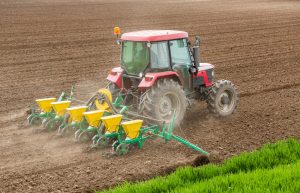The seed drill is an ingenious invention that has played a pivotal role in revolutionizing agriculture. This innovative machine, developed by Jethro Tull in the early 18th century, has transformed the way farmers sow seeds and significantly improved crop yields. In this comprehensive guide, we will explore the history, purpose, and impact of the seed drill, as well as its key features and benefits. Join us as we delve into the fascinating world of this agricultural marvel.
The Evolution of Seed-Sowing Techniques
Before the Seed Drill: Manual Broadcasting and Hand Planting
Before the advent of the seed drill, farmers relied on manual broadcasting and hand-planting methods to sow their seeds. In manual broadcasting, seeds were scattered by hand across plowed and harrowed fields. While this approach allowed for a relatively even distribution of seeds, it was inefficient, time-consuming, and often resulted in wastage. Hand planting, on the other hand, involved individually placing seeds into the ground, which was a labor-intensive process. These traditional methods lacked precision and hindered agricultural productivity.
Early Innovations: Ancient Seed Drills
While Jethro Tull is credited with inventing the modern seed drill, ancient civilizations made early attempts at mechanizing seed sowing. In ancient Sumer, a single-tube seed drill was used as early as 3000 BC. Similarly, multi-tube seed drills were employed in China around 700 AD. However, these early iterations did not gain widespread use and did not have the same impact as Tull’s seed drill.
Jethro Tull: The Man Behind the Seed Drill
The Life and Work of Jethro Tull
Jethro Tull, born in Basildon, Berkshire, England, in 1664, was an agricultural pioneer and inventor. Although he initially trained as a lawyer, Tull’s passion for farming led him to explore innovative agricultural practices. He became deeply dissatisfied with the traditional methods of seed sowing and embarked on a mission to revolutionize the way farmers planted their crops.
The Invention of the Seed Drill
In 1701, Jethro Tull unveiled his groundbreaking invention: the seed drill. This mechanical marvel incorporated a rotating cylinder with grooves that allowed seeds to pass from a hopper above to a funnel below. The seeds were then directed into a channel created by a plow at the front of the machine and covered by a harrow at the rear. Tull’s seed drill ensured precise seed placement, consistent depth, and even distribution, eliminating wastage and dramatically increasing harvest yields.
How Does the Seed Drill Work?
The Mechanics Behind the Seed Drill
The seed drill operates on a simple yet ingenious mechanism. The seeds are stored in a hopper located above the rotating cylinder. As the cylinder rotates, the grooves carry the seeds downward, where they are guided into a funnel. From the funnel, the seeds are directed into a channel created by a plow, which creates rows for planting. A harrow follows the plow, covering the seeds with soil, and ensuring optimal conditions for germination.
Advantages of the Seed Drill
The seed drill offers several significant advantages over traditional seed-sowing methods:
-
Precision: The seed drill enables precise seed placement, ensuring uniform spacing and consistent depth, resulting in more even crop growth and reduced competition among plants.
-
Efficiency: With the seed drill, farmers can sow seeds rapidly and efficiently, covering large areas in a fraction of the time compared to manual methods.
-
Increased Yield: By eliminating seed wastage and promoting optimal growing conditions, the seed drill significantly improves crop yields.
-
Time and Labor Savings: Using the seed drill reduces the need for manual labor, allowing farmers to maximize their productivity.
Impact and Legacy of the Seed Drill
Agricultural Revolution and Increased Productivity
The seed drill played a pivotal role in the agricultural revolution of the 18th century. Its introduction led to a significant increase in agricultural productivity, as farmers could sow seeds more efficiently and effectively. By adopting the seed drill, farmers were able to cultivate larger areas, resulting in higher crop yields and improved food security.
Influence on Modern Farming Practices
Jethro Tull’s seed drill laid the foundation for modern farming practices. Its impact can be seen in contemporary agricultural machinery and techniques. The principles of precise seed placement, consistent depth, and even distribution are still fundamental in modern seed drills, ensuring optimal growing conditions and maximizing crop productivity.
Environmental Benefits
The seed drill’s precise seed placement helps reduce the need for excessive seed usage, minimizing seed wastage and promoting sustainable farming practices. Additionally, the efficient use of resources, such as water and nutrients, contributes to environmentally friendly farming.
Conclusion
The seed drill, invented by Jethro Tull, revolutionized agriculture and set the stage for modern farming practices. Its impact on crop yields, efficiency, and sustainability cannot be overstated. By providing precise seed placement, consistent depth, and even distribution, the seed drill continues to play a crucial role in maximizing agricultural productivity while minimizing resource waste. As we embrace technological advancements, let us not forget the humble seed drill and its profound contribution to feeding the world.




